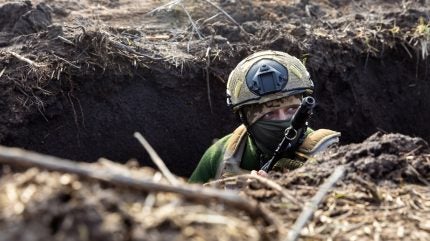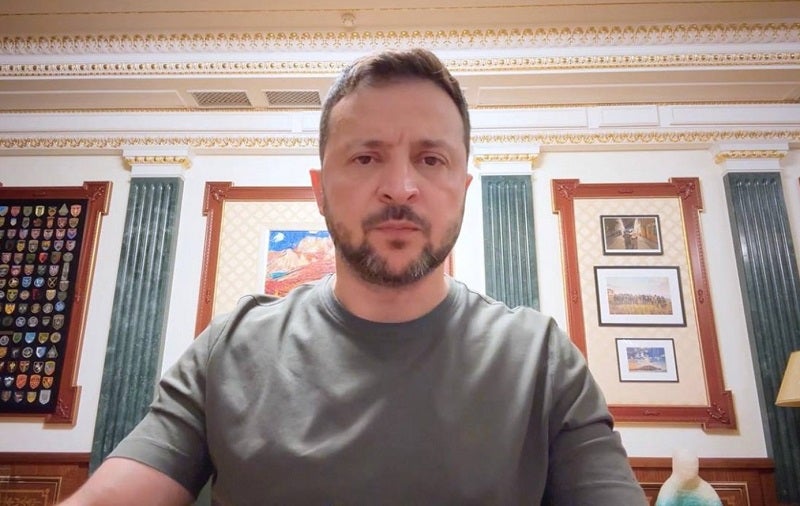
After two weeks of speculation, the President of Ukraine, Volodymyr Zelenskyy, disclosed the strategic purpose of the armed forces’ surprising incursion into Russia’s Kursk region for the first time.
In one of his regular broadcasts to the nation, on the evening of 18 August 2024, he stated:
“It is now our primary task in defensive operations overall to destroy as much Russian war potential as possible and conduct maximum counter-offensive actions.”
He added: “This includes creating a buffer zone on the aggressor’s territory – our operation in the Kursk region.”
The situation so far
Until now, Ukraine has operated defensively after Russian forces broke an enduring deadlock through sheer mass of troops in the East Ukrainian theatre.
Russia has made some marginal advances at several points, particularly in Donetsk. Intense fighting persists along more than 970km of the 3,000km frontline.

US Tariffs are shifting - will you react or anticipate?
Don’t let policy changes catch you off guard. Stay proactive with real-time data and expert analysis.
By GlobalDataIn response, Ukraine’s forces organised a surprise incursion into Kursk Oblast, a decision met with derision and praise in equal measure as Ukrainian high command did well to keep their intentions hidden, in contrast to its 2023 counter-offensive.

Recently, Ukrainian military officials have claimed control of up to 1,000km of Russian territory, and this is anticipated to increase further, after the Washington Post suggested the incursion will advance into neighbouring Belgorod Oblast.
Nonetheless, one leading academic, Phillips O’Brien, a Professor in Strategic Studies, University of St Andrews, noted that “the Ukrainian offensive in Russia has taken approximately as much territory in 11 days than the Russians have taken in Ukraine in 2024 – and if things continue it will take more.”
Two parts to Ukraine’s strategy
For good or for ill, Ukraine’s plans are coming into fruition. There are two moving parts to the new military strategy when dissecting the limited information that Zelenskyy made in his address: securing the ‘buffer zone’ in Russia and the elimination of ‘Russian war potential’.
The security of the buffer is signalled by the minimal response Russia has mustered to respond to the loss of territory. Also, Ukraine has set up military administration offices in the Kursk region, adding to the sense of consolidation by establishing a fixed point from where it may direct its forces deeper inside Russia.
Meanwhile, the call to destroy ‘Russian war potential’ is already underway. Ukrainian Air Force Commander, Lieutenant General Mykola Oleshchuk, confirmed the service conducted an airstrike against a bridge across the Seim River in Zvannoye, creating a large hole along the roadway. There are also widespread reports of two other Russian bridges being destroyed.
Moreover, GlobalData Defence Analyst Fox Walker suggests that there may be more depth to depriving Russian resources:
“Two meanings come to mind when thinking about the importance of destroying Russian war potential. The first meaning is physical while the second is more psychological. A major goal of Ukraine’s offensive targeting in Russian territory thus far has been the destruction of Russian supply lines. Zelenskyy hopes to weaken Russia’s capacity to wage war by attacking the factories and infrastructure that produce and transport weapons, vehicles, and personnel.
“The second and more psychological tactic is to disorganise and disorient Russian strategists. The Kursk operation requires Russian war leaders to devote time and resources to combatting Ukraine’s incursion. Russian leadership is scrambling to come up with tactics, operations, and strategies to prevent Ukraine from making further progress in the region.
“The Kursk incursion has already displaced about 200,000 Russians, so senior officials must work urgently to keep that number from growing, lest they sow further chaos and anger in Russia,” Walker added.


